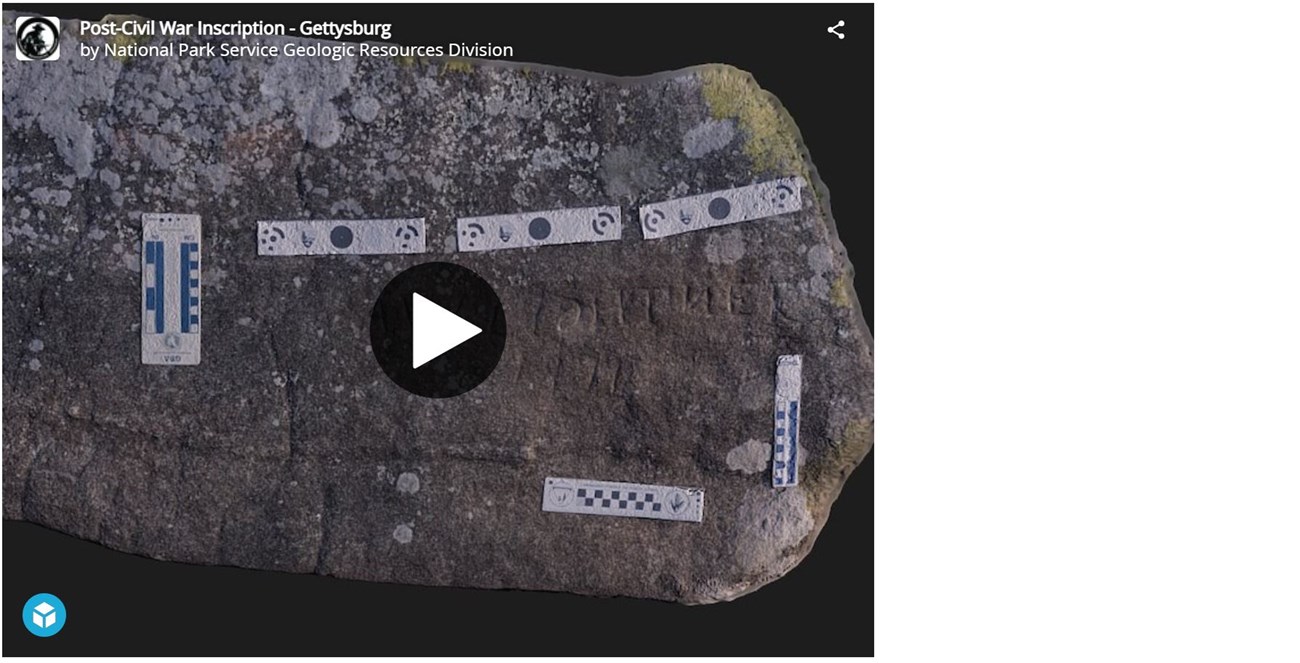Part of a series of articles titled Photogrammetry Applications and Examples.
Article
Cultural Resource Monitoring Example—Gettysburg
Gettysburg National Military Park is the site of one of the most famous battles of the American Civil war. Memorialized by Lincoln's address, the park contains numerous monuments and tributes to both Union and Confederate soldiers. During and in the immediate years following the battle, numerous signatures were carved into the stones and rocks exposed throughout the area. Interpretive efforts often rely on using chalk or pouring water onto a signature to make the mark more discernable. However, these methods to increase the contrast can have deleterious impacts for preservation. A photogrammetric reconstruction [view photo] can be modified using a color range that highlights the incriptions. The 3D model is not especially impressive, but the power here is the ability to change the surface without contact to the resource that could increase degradation.
3D Post-Civil War Inscription
Gettysburg National Military Park, Pennsylvania
A 3D model. This model shows a rock with writing carved into its surface. The model can be rotated and tilted using a computer interface.
1871 signature by A W Lightner - Local youth that carved his name into a stone near the monument to the 122nd New York Infantry Regiment in Gettysburg National Military Park.
1871 signature by A W Lightner - Local youth that carved his name into a stone near the monument to the 122nd New York Infantry Regiment in Gettysburg National Military Park.
Last updated: April 30, 2021

